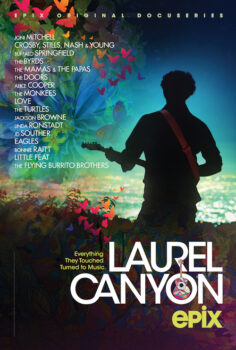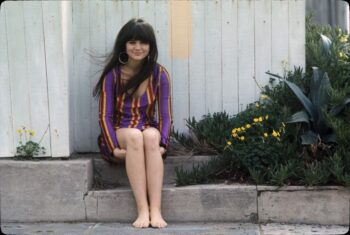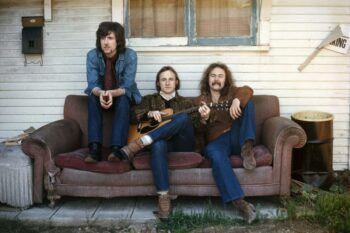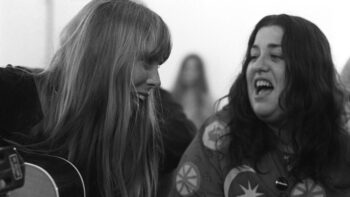Film Review: Laurel Canyon
At first glance, one might get a sense of déjà vu (how appropriate) after watching the first half hour or so of the first episode of Alison Ellwood’s Laurel Canyon, but a bit of patience will pay off in the end.
For the uninitiated, Laurel Canyon is the mountainous LA neighbourhood known for its beauty, its landscape and as a place where artists and hippies gathered during the late sixties and early 70s to “get their heads together”.
Laurel Canyon, the documentary (actually two feature-length “episodes”, goes deep into the lives, the music and the associated interpersonal relationship between the likes of Neil Young, Joni Mitchell, Jackson Browne, Linda Ronstadt, Don Henley…the list is almost endless.
 Episode 1 takes us from the mid-60s when bands like Love, The Byrds and The Mamas & Papas were establishing LA as America’s newest music center, many making the 3000 mile drive from New York City (California Dreaming, anyone?)
Episode 1 takes us from the mid-60s when bands like Love, The Byrds and The Mamas & Papas were establishing LA as America’s newest music center, many making the 3000 mile drive from New York City (California Dreaming, anyone?)
Many of these stories have been told before…how The Buffalo Springfield formed when Neil Young ran into Stephen Stills on an LA freeway…and at first I was worried that these films would simply re-hash material I had heard many times before.
The first few minutes seemed to focus on photographer/musician Henry Diltzand and the late Monkee Peter Tork, which seemed odd.
But eventually the new material began to reveal details that had previously been brushed under the carpet.
 New interviews with the likes of Linda Ronstadt, Jackson Browne, Michelle Phillips and Chris Hillman (among many others) are mixed with archival comments from Cass Elliott, Gram Parsons and Frank Zappa.
New interviews with the likes of Linda Ronstadt, Jackson Browne, Michelle Phillips and Chris Hillman (among many others) are mixed with archival comments from Cass Elliott, Gram Parsons and Frank Zappa.
The story is one of new talent, new lifestyles and new songs up until Woodstock. Just a week or so after the peaceful gathering of half a million music lovers, the Manson Murders took place, followed by Altamont and a string of high-profile deaths due to drugs.
 Suddenly the scene got dark and the footage and comments from those who were there show how deeply connected the musicians of the area were with those events.
Suddenly the scene got dark and the footage and comments from those who were there show how deeply connected the musicians of the area were with those events.
The second episode looks at the 1970s, beginning with the formation of The Flying Burrito Brothers, the emergence of Jackson Browne and eventually the multi-million dollar cash grab that became the Eagles.
It turns out that it wasn’t Manson or the Hell’s Angels that killed the scene, but rather pure greed.
To me, the biggest revelation was the importance of two women…Cass Elliott and Linda Ronstadt. It was at one of Cass’s infamous BBQ’s (where everyone got baked) that Crosby, Stills and Nash formed. Then, the Eagles formed after getting together as Linda Ronstadt’s backing band.
 One can’t imagine what the Laurel Canyon scene or the 70s in general would have been like without them.
One can’t imagine what the Laurel Canyon scene or the 70s in general would have been like without them.
One other artist who seems to virtually glow every time she is seen is Joni Mitchell. Graham Nash’s description of their breakup is one of the most emotionally-evocative parts of the film.
Like all good films, Laurel Canyon has its share of villains (Don Henley, John Phillips) and heroes (Linda Ronstadt, Cass Elliott).
And if you think you know the whole Laurel Canyon story, think again.
Then get out your copy of The Pretender, turn down the lights and turn up the volume.
Marty Duda
Laurel Canyon can be seen on Docplay.com.
- Adam Hattaway & The HauntersJuly 25, 2024Wine Cellar (13th Floor Concert Review) - July 26, 2024
- New Music Friday: 13th Floor New Album Picks: July 26, 2024 - July 26, 2024
- Holly Arrowsmith – Blue Dreams(Leather Jacket Records) - July 25, 2024
